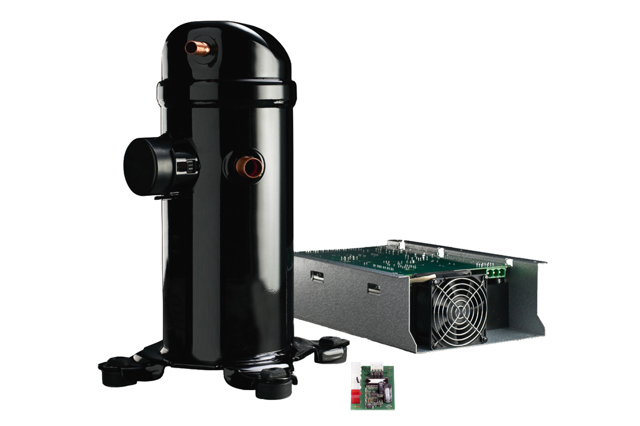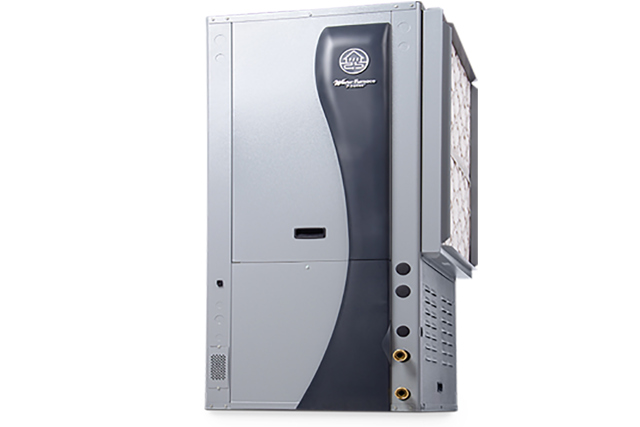During the development period, Brown worked extensively with Danfoss and account manager Brian Kelley.
"You could buy a scroll compressor and an inverter off the shelf, but they won’t work as well together," says Kelley. "You need control logic and algorithms developed specifically for the system. Danfoss knows all about that, because we have spent years in our own extensive development process to get where we are today."
Kelley explains that Danfoss took the lead in introducing the first VFD for HVAC in 1968. "A VFD is critical to operating a variable speed compressor," he explains. "It reshapes the frequency of the current supplied to the AC motor to change speed, torque and overall performance. That's why a lot of intelligence is built into the inverter used in our Performer VRJ compressors."
The Danfoss variable frequency drive uses algorithms developed specifically for heating, ventilation and air conditioning (HVAC). Algorithms, which are programs that make decisions based on inputs and outputs, perform a number of jobs -- adjusting pressures and maintaining system stability as speed decreases and increases.
For the WaterFurnace 7 Series, a Danfoss VFD is paired inside the cabinet along with the Performer VRJ compressor.
"The Performer VRJ compressor is built in our Arkadelphia, Arkansas, plant," says Kelley. "As a variable speed scroll compressor, it operates through a range of high and low speeds, unlike one RPM for a fixed-speed scroll. Consequently, it can closely match the demands of the system to yield higher levels of energy efficiency."
Kelley explains that one challenge, however, is oil management. "As the scroll’s rotational speed changes, the amount of refrigerant — and oil — flowing through the compressor decreases. The VRJ compressor uses a patented oil injection system to ensure the scrolls and bearings are optimally lubricated at all compressor speeds.
"The VRJ compressor is also unique because it can run both slower and faster than what is standard. For example, it can turn down speed as low as 15 percent of its rated capacity and overspeed up to 117 percent from the nominal 3600 rpm. The overspeed capability means it can deliver more heat on colder days."
"The VRJ compressor allows us to do some unique things in equipment sizing," says WaterFurnace's Brown. "We can produce more heating capacity for a given home without increasing the length of buried loop. In technical language, it allows us to transfer heat from the earth loop — load it up between heating and cooling — more evenly. The result is higher heating capacity, which means lower operating costs and lower installed cost for the homeowner. This is a big advantage for areas north of the Mason Dixon Line and just south of the Great Lakes where we can take advantage of the loop balancing technique."
The ability to run the compressor, fans and pumps at slower than normal speeds brings another benefit — dehumidification. "The 7 Series has a special active dehumidification mode," explains Brown. "It turns the system into a whole-house dehumidifier, because the unit can dehumidify the home independently of whether it's heating or cooling. Most heat pumps will try to get moisture out of the air. But with our active dehumidification mode, the system can remove moisture without cooling or heating the home. Again, that means more comfort for less cost."
"Our 7 Series geothermal system is so clean and neat, it's unbelievable," Brown emphasizes. “People think it’s just too good to be true. The reality is, it is that good; it’s that efficient; it’s that simple; and we’re delivering that performance today."
– Bob Brown, vice president of engineering for WaterFurnace


